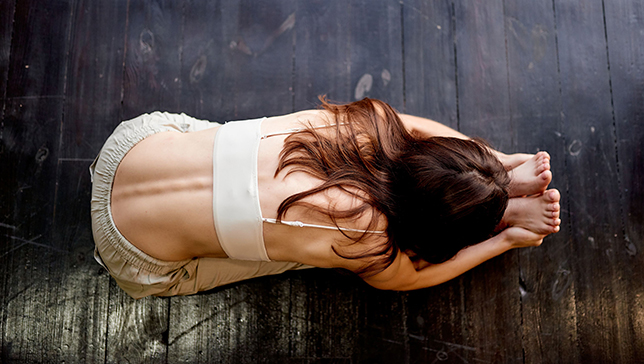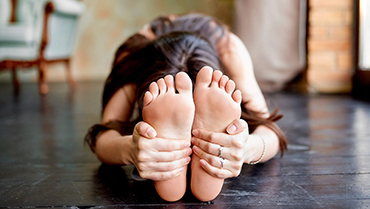Seated Forward Bend - Paschimottanasana

Contents
Seated Forward Bend (Paschimottanasana) is a classic pose from Hatha yoga. The name Paschimottanasana translates to “Intense Stretch of The West,” symbolizing the end of a practice traditionally performed while facing the rising sun.
The term “Paschim” refers to the West side, representing the entire back of the body from the head to the heels. In Paschimottanasana, the focus is on a deep stretch of the back body, including the spine. This pose involves sitting with both legs extended straight on the ground, holding the big toes with your hands, and placing the forehead on the knees, creating a forward bend while seated.
True to its name, Seated Forward Bend provides a profound stretch to the dorsal area of the back, including the spine and muscles. This stretching action helps to unlock the spine and strengthen the muscles of the back.
Pose Detail
- Difficulty: Beginners
- By Type: Flexibility Yoga Poses
- Body Position: Forward Bend Yoga Poses, Seated Yoga Poses
- By Benefit: Yoga Poses For Digestion
Step-by-Step Instructions
Benefits and Contraindications
Balances liver, kidneys, adrenal glands, ovaries and uterus
Stretches spine, shoulders, hamstrings and pelvis
Therapeutic for high blood pressure, insomnia, infertility and sinusitis
Improves digestion
Relieves insomnia
Reduces anxiety
Asthma
Diarrhea
Back injury
Pregnancy (2nd and 3rd trimester requires modifications)
Photo poses in different angles


Modifications, Props & Tips
- If you are suffering from a herniated or compressed disc in the lower or middle back, or any other spinal issues (e.g. sciatica, SI-joint instability), be careful with this pose.
- If you are allowed to do forward bends by your physician, work on creating the movement from your pelvis and keep your spine as
straight as possible (so do not round your nose to your knee). - If the lower back is tight, you can open your legs hip-width apart.
- For tight hamstrings, you can bend your knees and support them with a block or folded blanket.
Frequently Asked Questions
Variations
- Standing Forward Bend Pose
- One Leg Folded Forward Bend Pose
- Upward-Facing Intense West Stretch